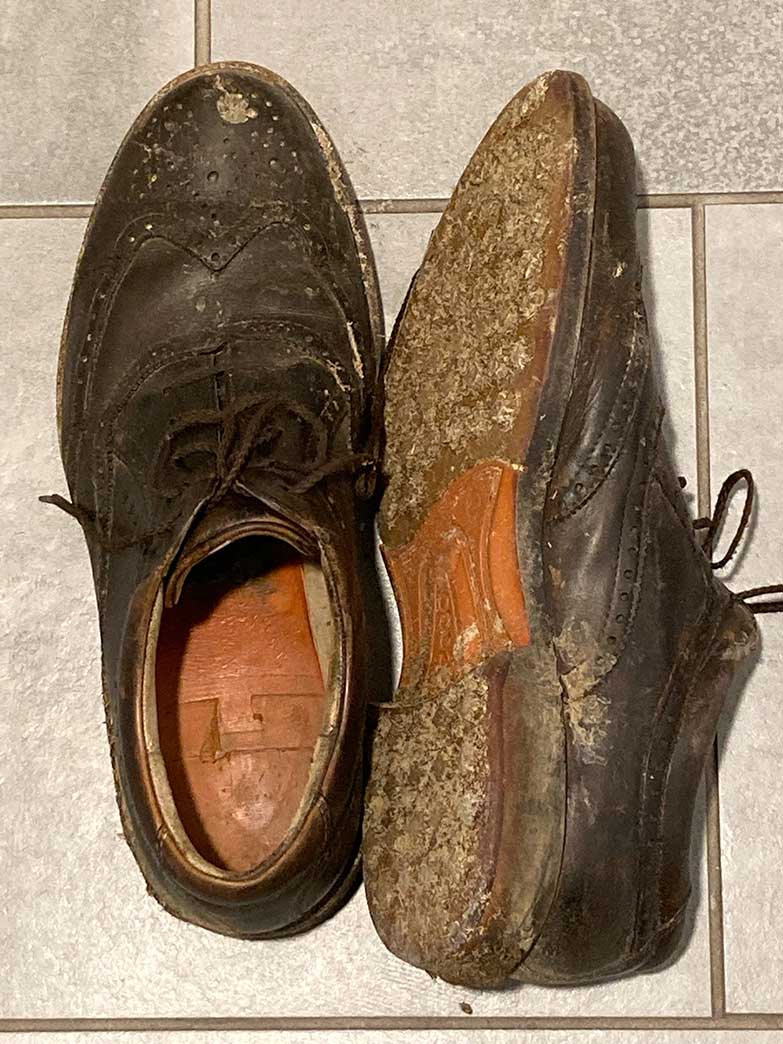Ed. note: This is Part III of Michael Bamberger’s three-part ode to nine-hole golf. You can read Part I here and Part II here.
***
If you know three fun facts about Sweetens Cove Golf Club, the course’s funky golf-this-way road sign is likely one of them.
Say you get to the nine-hole course in rural Tennessee as most people do, as a motorist and via I-24. You got your Rand McNally out? OK: now run your finger along Highway 72, aka North Cedar Avenue, heading south. You’re looking to make a sharp right on Sweetens Cove Road, named for a cove, not a golf course. And there it is: an “iconic” (not really but maybe by 2062) blue sign with white lettering:
SEQUATCHIE
VALLEY GOLF & CC
But you can barely read it, because of the 20 reflective hardware-store mailbox letters stuck on it:
SWEETENS COVE
GOLF
CLUB
The sign has been cited before. It’ll be cited again. It gets you in the mood.
And it’s fitting. Sweetens Cove is a golf course that is bathing in its make-do spirit. You know how Dyersville, Iowa, has a ballfield? South Pittsburg, Tenn., has a golf course. All together now: if you build it, they will come.
So you make that sharp right-hand turn on to Sweetens Cove Road, past another sign, this one posted by Star Pawn and Gun, and up and down a heaving road for two miles until you get to the golf course.

I arrived late on a recent and beautiful Wednesday afternoon. Yep, January, in Jethro-was-here rural Tennessee, and it was a perfect day for golf. No wind, high skies, mid-50s. I hadn’t played in maybe 10 days and was getting itchy. I had just read a book about the course, The Secret Home of Golf by Jim Hartsell, a Sweetens Cove regular. I had seen the golf-porn snaps. My heart was racing.
The course was closed.
The course had been closed all year, because of flooding and freezing temperatures. But now the tarps were finally off the course’s vast greens. (Technically there are nine of them but in practice you could say there are 18.) But still the course was closed.
The greens (MiniVerde Ultra-Dwarf Bermuda) were green. The fairways (Tifway 419 Bermuda) were the color of Army-surplus khakis. The itty-bitty pro shop was empty, save the fella manning it.
Nope.
Not today.
Probably tomorrow.
Get on the website and reserve your spot.
Hundred bucks, all day — if you’re walking.
By the way, they call that itty-bitty pro shop The Shed. If you know three fun facts about Sweetens Cove, that’s probably one of them.
The next day was the day. That Thursday. Opening Day, 2022, Sweetens Cove Golf Club, South Pittsburg, Tenn.
The first guys off all got shots of Sweetens Cove, a Tennessee whiskey, before heading out. I arrived long after that. (I’d rather be on a golf course at sunset than sunrise.) The day was dank. The fairways were soft. The greens were smooth and excellent.

Greens are to a golf course what eyes are to a portrait.
Some will say they are too much. Well, some would say the greens at the National Golf Links and the Old Course are too much, too. The Cove greens are excellent. There are vast sections of the greens where you could not put a pin — but you can roll your ball over this acreage, and watch it swoop and swerve. I think I saw them, in the dead of winter, likely about as fast as they get. They were country-club fast, if that. And that’s what they should be.
Greenkeepers have a word: pinnable. It’s an adjective, describing the sections of a green where you can cut a hole. It’s one of the most important words in golf, and one of the most underappreciated. The Sweetens Cove greens are loaded with pinnable sections. Each green has two flagsticks. On one green, one flagstick could be 100 yards from the other.
I played 36 holes, by myself and in about six hours, not including my lunch break, on the hood of my car. (No food service at Sweetens Cove, although they do tell you that if you order a Domino’s pie on the eighth tee, it’ll arrive by the time you hole out on nine.) I almost never waited and I played through only one group. I was never bored.
None of my four loops was like the other. I mixed-and-matched on every hole. Different tees, playing to different holes. I felt like I never played the same hole twice.
It’s an easy-walking course on a good-sized piece of land. The holes, all nine of them, are good. Good, solid, fun, I-still-got-my-ball golf holes. You’re hemmed in by mountains and farms. This is RFD golf. On the fourth green you can hear the 18-wheelers on I-24 roar on by.

Off the tee, driver in hand seven times from the back tees, the fairways are wide, but you can’t go to sleep. A lonely tree. A yawning bunker. A still cove. The approach shots, the same.
Some of the pin positions were comically difficult, but I never felt like there wasn’t a path to the bottom of the hole. I never had a moment of despair. I didn’t, but you could play all day with one ball, if you keep it out of the gunch and out of the ponds. Every hole, pretty much, has a gnarly area. Aim elsewhere.
What makes Sweetens Cove, more than anything, is its vibe. It’s refined pasture golf, if those words can coexist. It brings to mind for me two of my favorite courses: the old-timey Aiken Golf Club course, in Aiken, S.C., and Auchnafree, on the River Almond, near St. Davids, in the Scottish Highlands. Aiken is a public course. As for Auchnafree, good luck.
Sweetens Cove shouldn’t exist. I can’t think of another nine-hole public course in a rural area that is not connected to a school or a business or a resort.
By the time I marched back to the eighth tee for the fourth time, my shoes were caked in sand and dirt and the light was fading. I wasn’t worried about finishing. Nine is a par-3, and you can always play a par-3 in the dark. On the eighth tee, I could see the roof of The Shed. It was glowing, like a lighthouse for itty-bitty UFOs, or golfers trying to play home.
I did play nine by the light of the moon and made a 4 with three putts, none of them poor ones.

In the parking lot, men (I didn’t see any women then) were changing back into their Thursday-night civilian clothes in the beams of their headlights. The roof of The Shed, I could now see, was a series of stringed lights, packed tightly. The air was cool and getting cooler. A superb day of golf. My first 36-hole day of the new year. (Note to self: play more golf. It seems to make you happy.)
On my way back to I-24, I stopped at a gas station and then at the liquor store next to it. For any sentences here that you had to read twice, please direct your complaints not to me but the distillers at the Sweetens Cove Spirits Company. If you know three fun facts about Sweetens Cove, you probably know that the course owners — the humorist Peyton Manning among them — started a spirits company, too.
The one group I played through was a foursome, three men and a woman, from Alabama. They invited me through on the third hole. I went to a forward tee. I hit a solid drive, right down the sprinkler line. From there I cooked a hybrid past a tree in the middle of the fairway to about 20 feet from the left pin.
One of the boys trailing me let out a yell. I couldn’t duplicate the sound if I tried, but this is what it sounded like to me: ThatwhatImtalkinabout.
Michael Bamberger welcomes your comments at Michael.Bamberger@golf.com.










